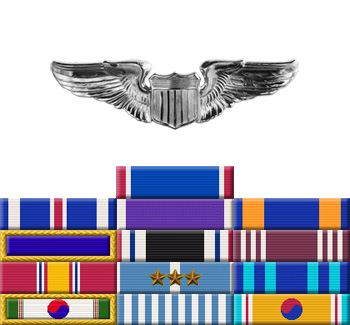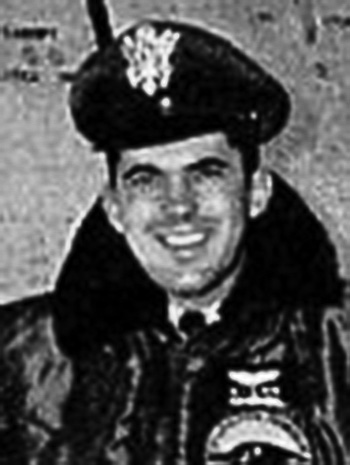Charles Spath was born on September 5, 1927, in Hamilton, Ohio. He enlisted in the Aviation Cadet Program of the U.S. Air Force on May 4, 1949, and was commissioned a 2d Lt and awarded his pilot wings at Goodfellow AFB, Texas, on May 12, 1950. After completing F-86 Combat Crew Training, he was assigned to the 335th Fighter Interceptor Squadron of the 4th Fighter Interceptor Wing in South Korea in early 1951. Lt Spath shared credit for destroying a MIG-15 in aerial combat on October 2, 1951, and he was forced to eject over North Korea and was taken as a Prisoner of War on February 3, 1952. It is unknown what happened to Lt Spath after he was captured, and he was promoted to Captain before being declared dead by the Department of Defense on March 31, 1954. His remains have never been recovered.
His Distinguished Service Cross Citation reads:
The President of the United States takes pride in presenting the Distinguished Service Cross (Posthumously) to Charles Ray Spath, First Lieutenant, U.S. Air Force, for extraordinary heroism in connection with military operations against an armed enemy of the United Nations while serving as a Pilot with the 335th Fighter-Interceptor Squadron, 4th Fighter-Interceptor Wing, FIFTH Air Force, in action against enemy forces over Simanju, Korea on 3 February 1952. Lieutenant Spath was flying Number Four position in a flight of four F-86 type aircraft on a combat air patrol over the Simanju area when a large formation of MIG-15s was sighted. Though overwhelmingly outnumbered, the flight leader positioned his flight for an attack. When the engine in the Number Three aircraft failed, Lieutenant Spath continued to cover it even though he had to slow his aircraft to dangerously low speed. The MIGs quickly attacked the disabled Number Three aircraft, but were repeatedly repulsed by Lieutenant Spath's superlative airmanship and marksmanship. With complete disregard for his own personal safety, Lieutenant Spath continued to fight although outnumbered three to one. Finally, three MIGs converged upon him, and due to the slow speed of his aircraft, he was unable to evade them. One MIG scored hits on Lieutenant Spath's aircraft and as it started burning and lost power, he advised his leader that he was bailing out. Then, even though his aircraft was burning, Lieutenant Spath, with extreme coolness, deliberately exposed himself to the cannon fire of numerous MIGs to allow the pilot of the disabled aircraft sufficient time to make a successful air start.
|



